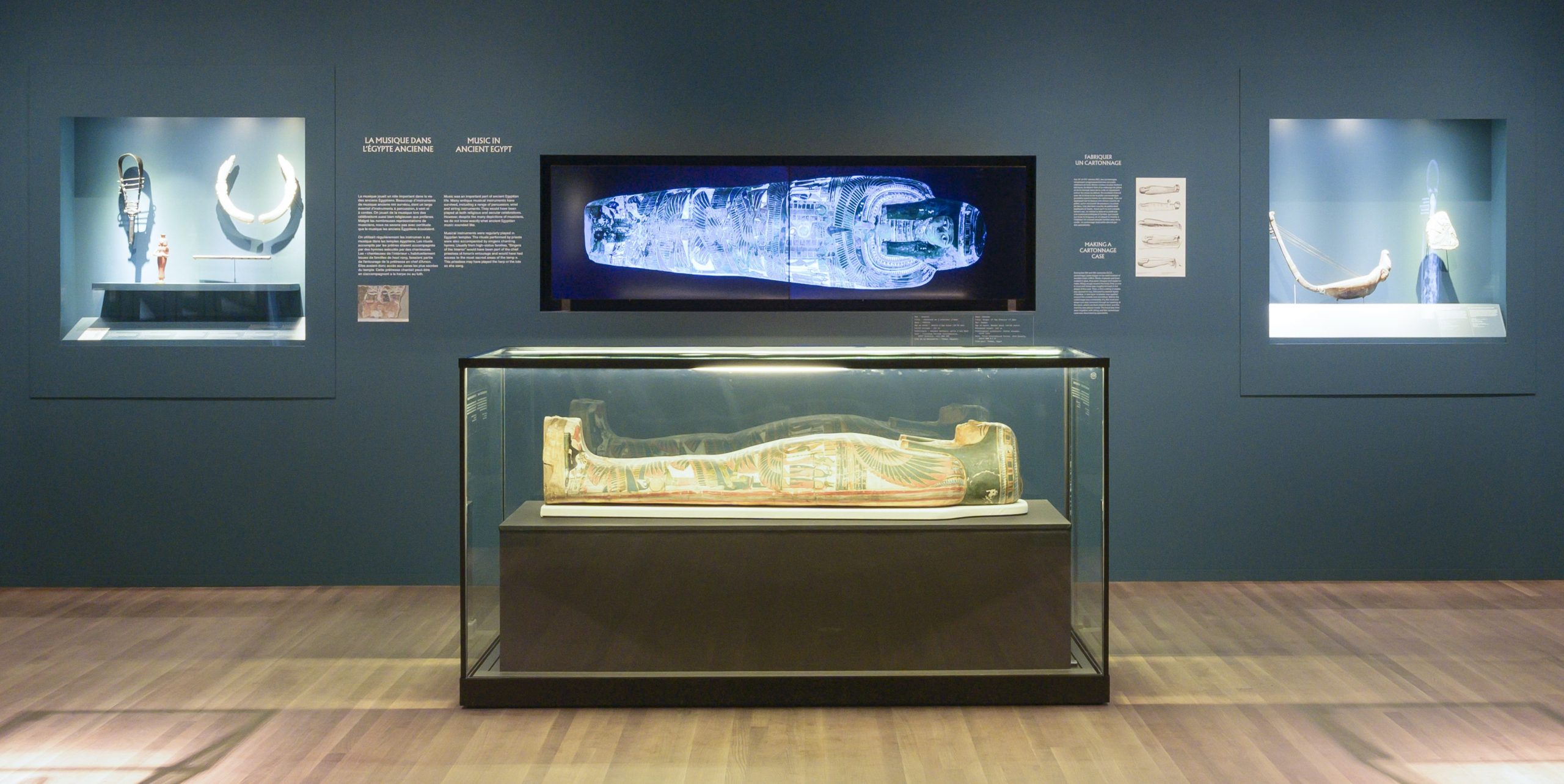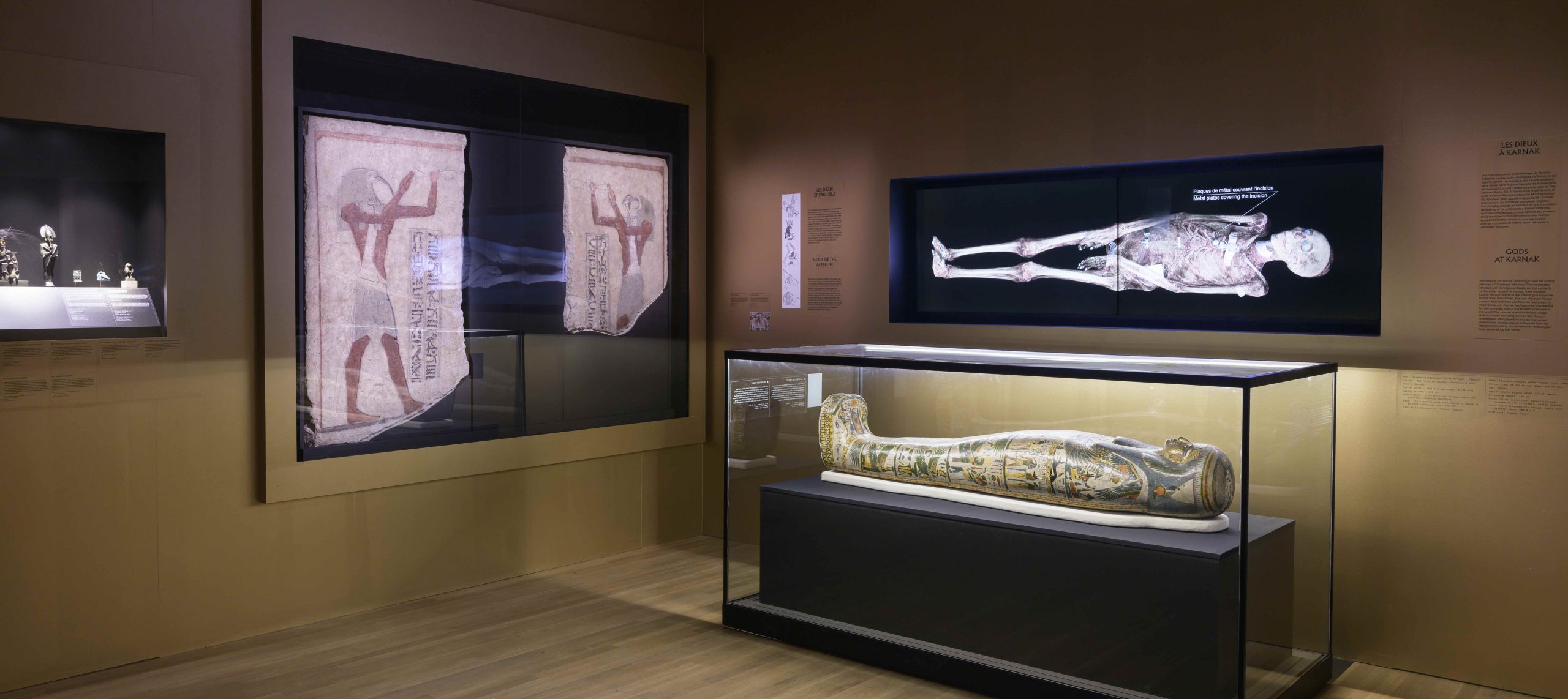A dive into the ancient Egyptians’ lives and a peek through their wrappings
Open until the end of March at the Montreal Museum of Fine Arts, the exhibit Egyptian Mummies: Exploring Ancient Lives presents the daily life of Ancient Egypt through the eyes of six individuals who lived between 900 BCE to the second century CE.
But there is more than just mummies, 3D scans of the mummies yield high-quality imagery of what is hidden underneath the strips of linen for visitors to explore.
“Exploring Ancient Lives”
The Museum of Fine Arts has put its own twist on the exhibition, originally curated by the British Museum in London, England. Each room connects to the mummy of an individual, which in turn is associated with a theme—music for a female singer, family life for a two-year-old mummified boy, religion for a priest and so forth.
Throughout each room, the public discovers the quotidian Egyptian life, from diet and religion to embalming and wigs. The exhibition showcases beautiful artifacts, mummies and their adorned sarcophaguses.
There is no shortage of historical artifacts to see at the Museum of Fine Arts. The exhibition’s curators have succeeded in showing visitors what everyday life in Ancient Egyptian was like.

Under the Wrappings
For nearly 40 years, researchers have scanned mummies using computer tomography (CT scan) to avoid damaging them when unwrapping their bodies. CT scanning yields 3D images of the dead and of the artifacts laying under the strips of linen.
Although non-invasive, this technique has some pitfalls when it comes to interpreting the images the computer creates. The main limitation of CT scans is that the analysis of the images only rarely enable researchers to distinguish between ante—and postmortem traumas—the latter resulting from the mummification process.
The exhibit includes a short video that shows each mummy’s digital unwrapping. Brief text boxes provide information about the discoveries made on the bodies. The six videos are very instructive, even if they’re repetitive once you have seen a couple.
This technique and its video rendering are central to the exhibition. The British Museum and the Museum of Fine Art claim that CT scanning provides a new perspective on these ancient histories. Arguably, it’s not that new.
A decade ago, the same technology was used at the Musée de la Civilisation in Québec city for another mummy exhibition. At the time, it was indeed exceptional—there was only one CT scanning rendering of a mummy, that was displayed in its own section of the exhibition.
The 3D technology is certainly informative and should reel in visitors, but it might not be the showstopper it is designed to be.

Museums in the Digital Age
Museums have embraced digital technologies and multimedia tools to raise visitors’ engagement. The Egyptian Mummies: Exploring Ancient Lives exhibition is a good example of the inclusion of new technologies.
Besides the CT scanning, the Museum of Fine Arts has partnered with Ubisoft. The video games company has provided a row of computers where visitors can play an educative version of Assassin’s Creed Origins, set in Ancient Egypt.
However, there are other avenues to explore and innovate in museography.
Research shows that immersive and multisensory exhibitions are one path worth exploring to engage visitors with a topic, stimulate their interest and provoke emotional responses.
The curators of Egyptian Mummies have experimented with this immersive approach through the occasional use of ambient sounds and lighting effects. But they have not fully embraced it.
More could have been done to engage the public on a multisensory level and give visitors the impression that they are, indeed, “exploring ancient lives.” Yet, the exhibition is definitely worth a visit––you will learn a lot and there are so many beautiful and informative things to see. The Egyptian Mummies: Exploring Ancient Lives exhibition is open until March 29.
Feature photo: A faux stonewall representing the entrance of a temple, lighting effects and Nile sounds welcome the visitors. Egyptian Mummies: Exploring Ancient Lives. Photo © MMFA, Denis Farley




